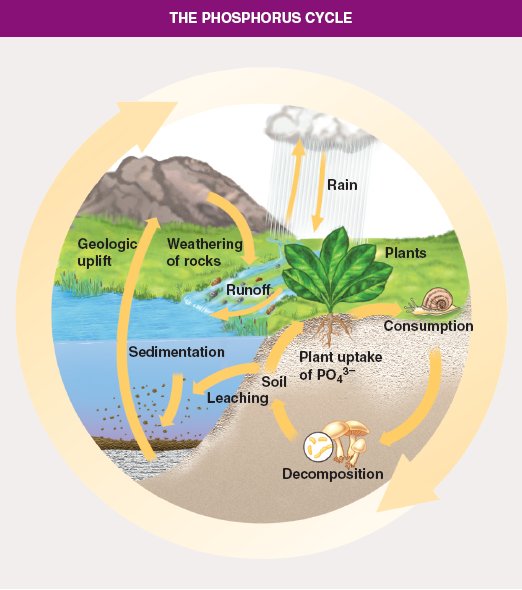 THE PHOSPHORUS CYCLE
THE PHOSPHORUS CYCLE
Forms available to life: The only biologically important inorganic form of phosphorus is phosphate (PO43-), which plants absorb and use to synthesize organic compounds.
Reservoirs: The largest accumulators of phosphorus are in sedimentary rocks. There are also quantities of phosphorus in soils, dissolved in oceans, and in biomass.
Key processes: Weathering of rocks adds phosphorus to soil; some leaches into groundwater and surface water and find its way to sea. Phosphate taken up by producers may be eaten by consumers and distributed through the food web. Phosphate is returned to soil or water through either decomposition of biomass or excretion by consumers.